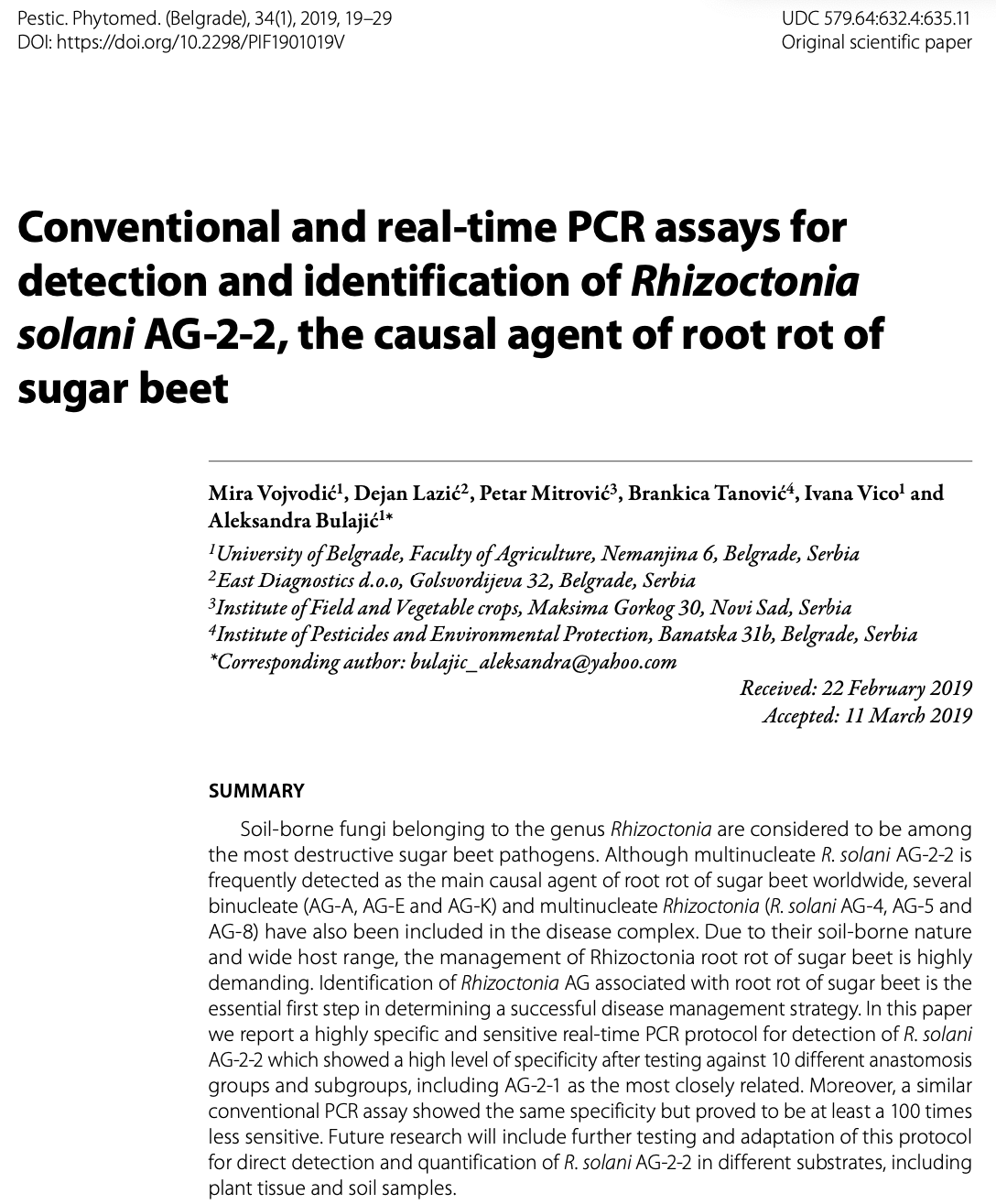
- February 18, 2021
Conventional and real-time PCR assays for detection and identification of Rhizoctonia solani AG-2-2, the causal agent of root rot of sugar beet
Mira Vojvodić, Dejan Lazić, Petar Mitrović, Brankica Tanović, Ivana Vico and Aleksandra Bulajić|University of Belgrade, Faculty of Agriculture, Nemanjina 6, Belgrade, Serbia, East Diagnostics d.o.o, Golsvordijeva 32, Belgrade, Serbia, Institute of Field and Vegetable crops, Maksima Gorkog 30, Novi Sad, Serbia, Institute of Pesticides and Environmental Protection, Banatska 31b, Belgrade, Serbia|2019|Pesticides & Phytomedicine|34:1:19-29 https://doi.org/10.2298/PIF1901019V
Rhizoctonia solani (R. solani) AG-2-2 is frequently detected as the main causal agent of root rot of sugar beet worldwide that significantly reduces yield of crops. Identification of R. solani AG associated with root rot of sugar beet is the first step in successful disease management. In this study, an assay was designed for the specific detection of R. solani AG-2-2 using previously published primers and TaqMan probe chemistry. The qPCR was compared against the same protocol adapted for conventional PCR. The assay conducted on the Mic qPCR Cycler was 1/4 of the time of that on the conventional PCR technology, demonstrating the advanced performance of the Mic. The assay was validated by testing against 10 different anastomosis groups and subgroups of binucleate and multinucleate Rhizoctonia isolates from the Fungal Collection of the Department of Phytopathology at The University of Belgrade. Both PCR protocols specifically amplified only the isolates of R. solani AG-2-2. The sensitivity of the conventional vs qPCR differed significantly, with higher sensitivity found in qPCR. Up to 10-5 was detected by qPCR, whereas no products were visible in conventional PCR after amplification of 10-3 and higher. Real-time PCR is a tool which can be successfully used for the fast and specific detection of Rhizoctonia at the species and AG levels, as well as for quantification of a wide range of pathogen DNA concentrations.